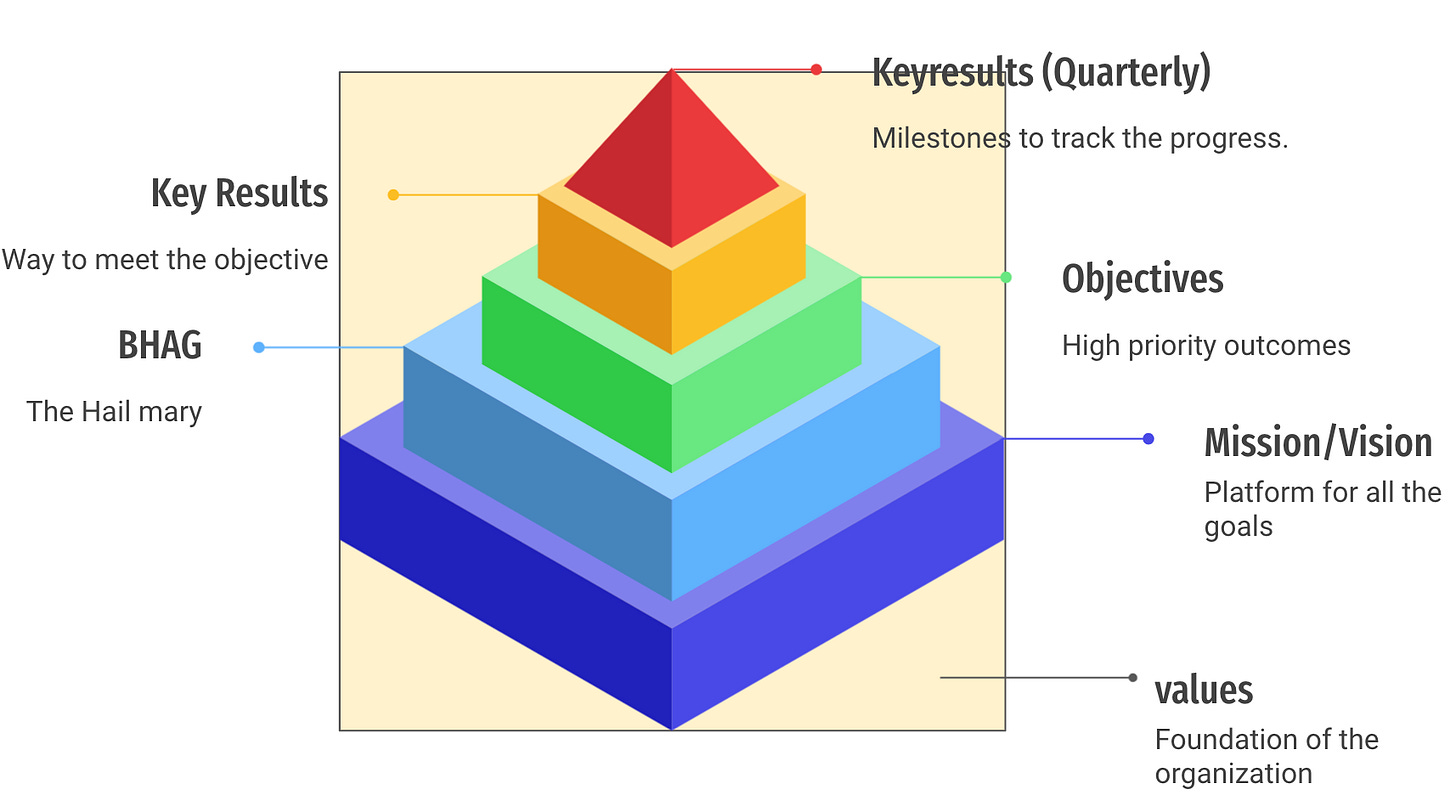Leading by Influence
How to tell a story to provide context to teams to foster autonomy and faster decision making.
Organizations are evolving from being hierarchal to data-driven. Storytelling is a critical part of leadership. New-gen leadership is about empathy, bringing people along and providing more context, and letting the teams control the “how”. Leaders are expected to play the role of a conduit of information, the connectors. They effectively contribute by bringing the context, painting the story, aligning the forces with measurable outcomes.
In order for a leader to recount a cohesive story to tie the long-term vision with the tactical task, they need building blocks. Let’s cover those blocks and see how to use them.
Vision
Definition - This is the true north for the company. The impact that the company wants to have on its customers and on the world.
Owner - The exec team.
Shelflife - Evolves with the industry ( typically 10 years)
Examples -
Tesla: “To accelerate the world’s transition to sustainable energy”
Whole Foods: “To nourish people and the planet.”
Oxfam: “A just world without poverty”
Amazon: “Our vision is to be earth’s most customer-centric company, where customers can find and discover anything they might want to buy online.”
Zappos: “To provide the best customer service possible. Deliver 'WOW' through service”
Mission
Definition - How will the company contribute towards the mission.
Owner - The exec team
Shelflife - Evolves with the industry ( typically 10 years)
Examples -
TED: Spread ideas.
Honest Tea: To create and promote great-tasting, healthy, organic beverages.
Adidas: To be the best sports company in the world.
Values -
Definition - How do we operate as a company. Values are the guardrails, the secret sauce that powers the mission/vision. Effective values are lucid and practicable, guardrails that employees can use to assess the behavior and direction.
Owner - The exec team
Shelflife - Evolve as the company learns more.
Examples -
BHAG
Definition - A few BHAG’s aligned with the mission (impact - focus on outcomes, revenue, scale)
Owner - The exec team
Shelflife - 5 or 10 years.
Examples
Objectives
Definition - List of outcomes that we are after to support those BHAGs. Objectives usually are multiyear outcomes and act as a true north for the impact.
Owner - VP or department heads
Shelflife - 1-3 years
KeyResults -
Definition - List of outputs that need to be delivered to attain those objectives, these are timebound.
Owner -
Shelflife - variable length with quarterly breakdown
Milestones
Definition - List of outputs that need to be delivered to attain those objectives, these are timebound.
Owner -
Shelflife - Quater
It is important to remember that the intent here is to tie the team’s key results to the impact on BHAG. Teams can have their own BHAG, objectives, and KR that are internal to them and necessary to sustain the growth, which is very well understood and aligned internally within the teams.



